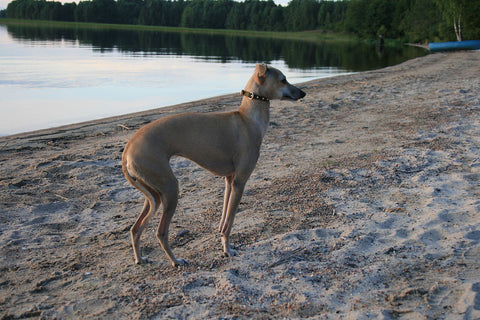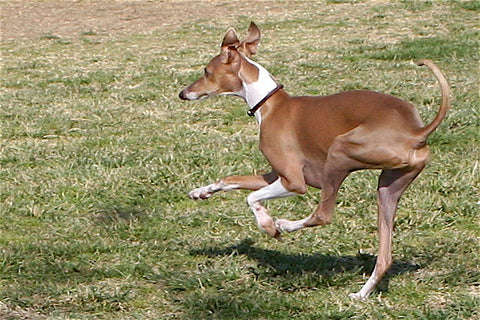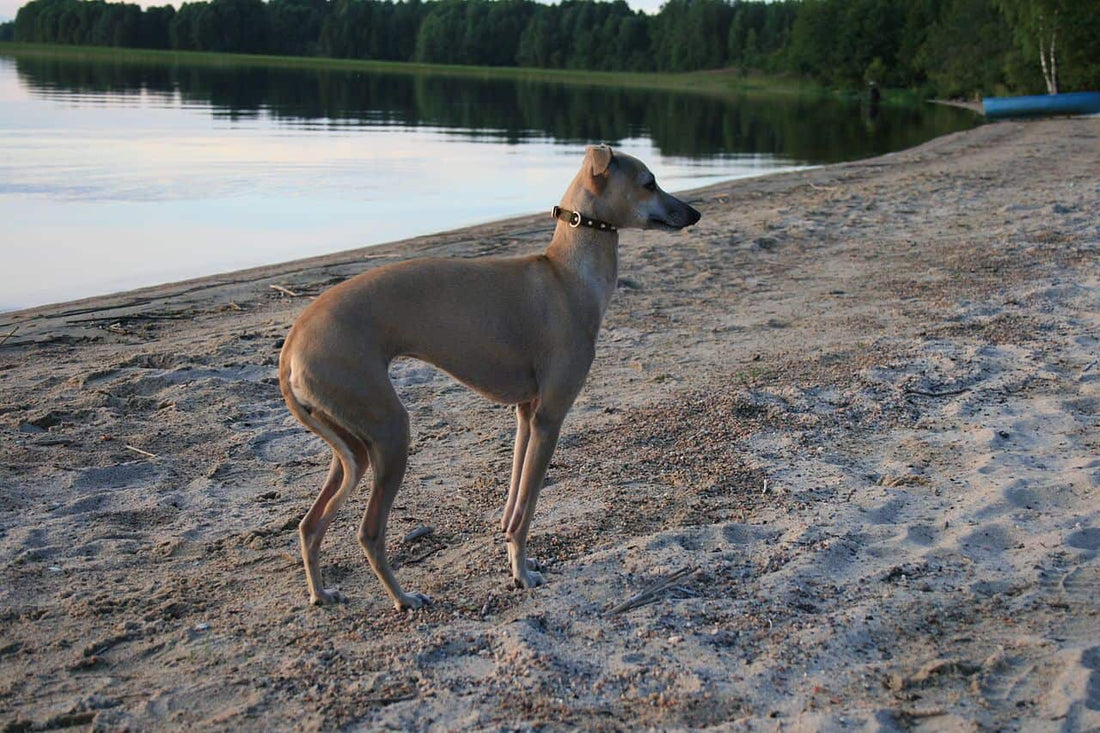Yes, Italian greyhounds are hypoallergenic, unlike normal greyhound. An Italian greyhound can be an ideal companion for those people who are suffering from allergies and was even found in Egyptian Tombs.
These dogs are classified as hypoallergenic because of their short and odorless coat. It makes them a perfect choice for allergy sufferers.
When you search for Italian greyhound puppies for sale on the internet, it doesn’t mean that all the hypoallergenic dogs are allergy-free. The exact definition of the word “hypoallergenic” is the minimum chance of triggering symptoms, not zero chances.

Reasons why Italian Greyhound is Good Choice for Allergy Sufferers?
There are three main reasons why this breed of dog is good for allergy sufferers.
These dogs are small and contain less hair on their body.
Italian greyhounds have extremely short hair or coats. So even during the shedding, the chances of a serious allergic reaction are very rare.
There are plenty of hypoallergenic breeds that have high maintenance coats. But it is not the case with Italian greyhounds. Only once, wipe down outside your home, it will keep your home hair-free, and coats of your dog will stay in good condition.
How to reduce the risk of allergic reactions from your pet?
Five ways that can reduce the risk of allergic reactions. Follow the below-given ways to stay safe and secure.
- Daily rub down your Italian greyhound outside your home is mandatory. Ask any other family member to do this. If no one is available, then do it by wearing a mask. There are plenty of dog grooming masks available in the market that can limit and stop you from inhaling allergens.
- Adult Italian greyhounds only shed a little, so the symptoms are hard to control. So the best thing to deal with this issue is to take regular allergy shots.
- If you are an allergy sufferer, then there is a big no to soft furnishings, such as carpets, throws, rugs, and curtains are the dream spot for the pesky to accumulate. Change to hard floors and wash throws weekly at 60 degrees.
- Take a damp cloth soaked in a fabric softener and wipe down your home daily. Anti-static present in the softener repels dust and dander and make your home smell fresher.
- It is mandatory to wash dog toys regularly. Saliva can result in one of the adverse reactions to the allergy sufferer. So to keep toys in place, make sure that you are using gloves or wash your hands immediately after touching dog toys.
Origin of the Italian Greyhound Breed
No one exactly knows from where the Italian greyhound breed came from. One thing is for sure; this breed didn’t originate in Italy. Dogs resembling this breed were found in Egyptian tombs, thousands of years ago. It is still not clear the dog that was classified as a “toy” breed was always small, or it was bred down into a small lapdog.
These dogs became much popular in ancient Rome. Many sculptures and paintings in Rome led people to believe that this breed was originated in Italy. So, that’s why they are known as a miniature Italian greyhound in the world. By the 17th century, many dog breeds were exported to Europe, and Italian greyhound was commonly found in Scotland and English. This breed was used as hunters of the rabbits. After some time, this breed was recognized as the choice for upper classes. This dog breed remains popular, and many high-class families opt for this breed.
1n 1886, Italian greyhound came to America, and it was recognized by AKC. Today this breed is ranked 72nd among the top popular dog breeds in America.
The Appearance of an Italian Greyhound
When we talk about general appearance, Italian greyhound is an elegant and fine-boned dog. This dog has a stepping-gait, much like a horse. The size of the Italian greyhound is between 13-15 inches.
This dog breed has arched back, straight forelegs, tucked abdomen, long slender neck, and streamlined head. Ears are narrow and sit close to the head. They have a deep chest and a long tail. They weight around 8 pounds and come in a variety of colors.
Exercise and Training
Exercise and training can help to encourage good behavior in your Italian greyhound. Italian greyhounds are difficult to potty trained.

So owners must start efforts from day one, and patience is required. Italian greyhounds are also known as Iggy. Iggy will not go to the toilet, and they prefer wet grass. If you are living in a cold climate, then you will have to build a shelter over the grass for your pet so that the Italian greyhound feels comfortable while toileting.
When it comes to training, this breed is not a people-pleasing. These dogs have an attitude. Take care of your voice during training. Don’t speak loudly or shout on IG. If you want your IG to be disciplined, use a firm voice instead of shouting. In this way, this breed will give you more respect. The training session should be positive and fun and it shouldn’t be more than 10 minutes. These dogs are very sensitive, so say your dogs not to lose heart.
Italian greyhounds are medium energy dogs. So, 30 minutes daily walk can be useful for these dogs. They have stepping-gait like a horse, so make sure that the area where the Italian greyhounds are placed is not fenced. Make sure that IGs are provided with plenty of exercises. Despite their intelligence, these dogs are not easy to train. It is easy for you to train a tired dog as compared to an energetic one.
Conclusion
Italian greyhounds are hypoallergenic; it never means that they are allergy-free. If you are suffering from allergies, then you can buy this dog breed. These dogs can be your good companion. These dogs require extra care. These dogs are compatible with those people who have mild allergies. Still, you need some precautions to deal with Italian greyhounds. These dogs require compact living space, such as apartments to be secure.




